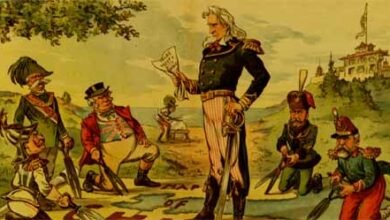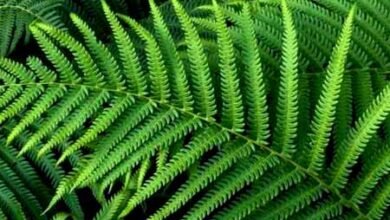
वनस्पति विज्ञान से संबंधित-97.
| 1. What is quinine obtained from? = From the bark of the stem of the cinchona plant.
2. What type of plant is hydrophyte? = Aquatic Plants. 3. For what purpose is acetylene used? = For artificial ripening of green fruits. 4. Which is the crop that enriches the soil with nitrogen? = Pea Crop. 5. How is onion cultivated? = By Transplanting. 6. What is the source of oxygen produced during photosynthesis? = Water. 7. The maximum damage to a tree is reached by destroying = Bark. 8. What is alfalfa? = A type of grass. 9. In the process of photosynthesis carbohydrates are formed in the presence of = Water, Light, Chlorophyll, and Carbon Dioxide. 10. Name the monocot fruit? = Banana and Coconut. 11. Quinine is obtained from the bark of the stem of which plant? = Cinchona. 12. Who plays a role in the conversion of ammonia to nitrate? = Nitrosomonas. 13. Whose fruit is a drupe? = Coconut. 14. Adding phosphorus helps in the development of = Plants. 15. What is the force of attraction of cell walls to water molecules called? = Adsorption. 16. What is found in green peas? = Grana and Stroma. 17. ‘Respiratory root’ or pneumatophore is found in which plant? = Jusia. 18. What is sandalwood commonly considered to be? = Partial Origin Parasite. 19. Pollination takes place in sugarcane and wheat by = By Air. 20. Which one is a code fruit? = Apple. 21. Bhojpatra is produced from? = The bark of Betula. 22. Potato belongs to which family? = Solanesia. 23. Which plant was selected by Mendel for his genetics experiment? = Peas. 24. What is called the principle of selection of nature? = Darwin. 25. After fertilization the ovary turns into what? = Fruit. 26. The highest quantity is found in the variety of Golden Rice.? = Vitamin A. 27. Which part is absent in angiosperm? = Seed. 28. What type of plant is Akashbel? = A Parasitic Plant. 29. Plants growing in saline water? = Halophyte. 30. Seedless vascular plants are included under = Pteridophyte. 31. The photosynthesis of a lichen is usually? = Brown Algae. 32. Which plant group is called the amphibian of the plant kingdom? = Bryophytes. 33. The male genitalia of a flower is called? = Stamens. 34. The female genitalia of a flower is called? = Jayang. 35. The plant body of the class Pteridophyta is divided into? = Root, stem, and leaf. 36. Who propounded the natural system of classification of plants? = Carolus Linnaeus. 37. What is the fertilization process? = Combination of a male gamete with an ovum. 38. Which is the most important part of the plant from the point of view of the life cycle? = Flower. 39. The red color of the Red Sea is due to the presence of? = Algae. 40. A measure of the amount of oxygen that is required for the decomposition of biodegradable organic matter in a sample of water by aerobic organic decomposers? = Biochemical Oxygen Demand. ============= ============ ============ 1. कुनैन किस्से प्राप्त होती है? = सिनकोना पौधे के तने की छाल से. 2. हाइड्रोफाइट किस प्रकार का पौधा है? = जलीय पौधे. 3. एसीटिलीन का प्रयोग किस कार्य मे होता है? = हरे फलों को कृत्रिम रूप से पकाने हेतु. 4. मृदा को नाइट्रोजन से भरपूर करने वाली फसल कौन सी है? = मटर की फसल. 5. प्याज की खेती कैसे की जाती है? = प्रतिरोपण करके. 6. प्रकाश संश्लेषण के दौरान पैदा होने वाली आक्सीजन का स्त्रोत होता है? = जल. 7. किसी वृक्ष को अधिकतम हानि किसके नाश करके पहुचती है? = छाल. 8. एल्फल्फा क्या है? = एक प्रकार की घास. 9. प्रकाश संश्लेषण प्रक्रिया में किसकी उपस्थिति में कार्बोहाइड्रेट का निर्माण होता है? = जल, प्रकाश, क्लोरोफिल तथा कार्बनडाइआक्साइड. 10. एकबीजपत्री फल का नाम बताएं? = केला और नारियल. 11. किस पौधे के तने की छाल से कुनैन प्राप्त की जाती है? = सिनकोना. 12. अमोनिया को नाइट्रेट में बदलने में कौन भूमिका निभाता है? = नाइट्रोसोमोनास. 13. किसका फल ड्रूप होता है? = नारियल. 14. फॉस्फोरस डालने से किसके विकास मे सहायता मिलती है? = पौधो के. 15. जल के अणुओं के लिए कोशिका भित्तियों का आकर्षण बल को क्या कहते हैं? = अधिशोषण. 16. हरित लवक में क्या पाया जाता है? = ग्रेना और स्ट्रोमा. 17. ‘श्वसन मूल’ या न्येमेटोफोर किस पौधे में पायी जाती है? = जूशिया. 18. चन्दन को सामान्यतः क्या माना जाता है? = आंशिक मूल परजीवी. 19. गन्ना और गेहूँ में किसके द्वारा परागण होता है? = हवा द्वारा. 20. कौन-सा एक कूट फल है? = सेब. 21. भोजपत्र उत्त्पन्न होता है? = बेटुला की छाल से. 22. आलू किस कुल से सम्बन्धित है? = सोलेनेसी. 23. आनुवंशिकी सम्बंधी प्रयोग के लिए मेंडल ने किस पौधे का चुनाव किया था? = मटर का. 24. प्रकृति-वरण का सिद्धांत किसे कहा जाता है? = डार्विन. 25. निषेचन के बाद अण्डाशय किस में बदल जाता है? = फल. 26. गोल्डन राइस की किस्म में सर्वाधिक मात्रा में पाया जाता है? = विटामिन ए. 27. अनावृतबीजी में कौन सा भाग अनुपस्थित होता है? = बीजाण्ड. 28. आकाशबेल कैसा पौधा है? = परजीवी पौधा है. 29. लवणीय जल में उगने वाले पौधों को? = हैलोफाइट. 30. किसके अंतर्गत बीजरहित संवहनीय पादप सम्मलित होते हैं? = टेरिडोफाइट. 31. एक शैक(लाईकेन) का प्रकाशसंश्लेषी प्राय: होता है? = भूरी शैवाल. 32. किस पादप समूह को पादप जगत का उभयचारी(एंफ़िबियन) कहा जाता है? = ब्रायोफाईट्स. 33. पुष्प के नर जननांग को कहा जाता है? = पुंकेसर. 34. पुष्प के मादा जननांग को कहा जाता है? = जायांग. 35. टेरिडोफाइटा वर्ग के पौधे का शरीर किस्में विभाजित होते हैं? = जड़, तना और पत्ती. 36. पाद्पों के वर्गीकरण की प्राकृतिक प्रणाली को किसने प्रतिपादित किया था? = कैरोलस लिनियस. 37. निषेचन क्रिया क्या है? = एक नर युग्मक का अण्डाणु से संयोजन. 38. जीवनचक्र की दृष्टि से पौधे का सबसे महत्त्वपूर्ण अंग कौन-सा है? = पुष्प. 39. लाल सागर का लाल रंग किसकी उपस्थिति के कारण होता है? = शैवाल. 40. ऑक्सीजन की उस मात्रा का मापन है जो जल के एक नमूने में वायवीय जैविक अपघटकों जैव क्षयकारी कार्बनिक पदार्थों के अपघटन के लिए आवश्यक है? = बायोकेमिकल ऑक्सीजन डिमाण्ड.
|





